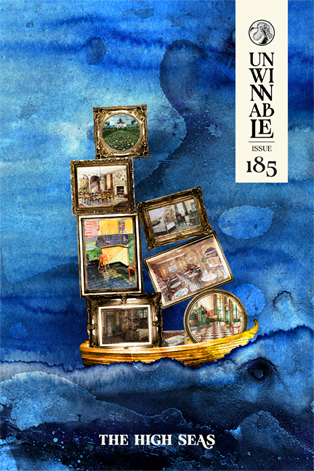
Living Legends Trapped in Time

This column is a reprint from Unwinnable Monthly #185. If you like what you see, grab the magazine for less than ten dollars, or subscribe and get all future magazines for half price.
———
Architecture and games.
———
Hyrule is a place where past and present have long since merged. The nature of worldbuilding has always been that continuities are strained in between sequels and fleeting moments inspire spinoffs, but the trend of timelessness in sequential storytelling couldn’t be truer than what you’ll find in The Legend of Zelda, especially given the number of entries in the series.
When it comes to canon, there’s not much that can be said for sure in such a situation, the needs of narrative, design changes or engineering constraints upending earlier ideas and understandings. In Tears of the Kingdom, this particular theme crystallizes around a character who is both dead and alive depending on your perspective, Princess Zelda.
Zelda in the game finds herself eternally intertwined with the Zonai. Trapped in a timeless twilight, she is both a beacon of life and a haunting echo of death, forever wandering the ancient ruins which bear the mystic marks of this long-lost civilization. The crumbling stones and ethereal constructs whisper secrets of a bygone era, trapping her in a perpetual dance between memory and myth. As she navigates the spectral corridors of Hyrule, her spirit becomes a bridge, connecting the fervor of a living world to the silent lament of a languishing society.
The enigmatic remnants of the Zonai stand as a silent testament to this mostly forgotten period in which myth and memory converge. The ancient structures not only separate the sky and punctuate the landscape with their striking geometric forms and evocative designs but also represent a form of spatial poetry, inviting you to experience the game world through a lens which is more than merely aesthetic.
When they appeared in Breath of the Wild, the Zonai were shrouded in mystery, represented as a prehistoric people whose civilization left behind ruins steeped in symbolism. Their presence in Tears of the Kingdom is, however, no longer confined to cryptic relics but has been brought to life through vivid representations, ranging from soaring islands in the sky to shadowy mines below the surface of the game world.

The ruins bear all the hallmarks of an architectural language that arises naturally from the surrounding landscape, echoing influences from the real world while forging their own distinct identity within the vast lore of the series, particularly regarding the Sheikah. These crumbling yet captivating forms are quite literally conduits to a sensory experience in which time, place, memory and materiality coalesce, a realm where the living and the dead are able to coexist in the same space. The strangely skeletal structures and the apparently aquatic automatons reflect such a contrast.
Phenomenology is the study of how we experience the world from within. When it comes to architecture, this approach asserts that buildings are not merely static objects or collections of shapes but dynamic arenas in which every surface, sound and shadow contributes to a broader sense of place. The seminal work by Gaston Bachelard, The Poetics of Space, presents the idea that intimate spaces including attics, corridors and of course labyrinthine ruins can evoke deep emotional responses from people, transforming physical dimensions into repositories of thought, contemplation, ideas and memory.
The architects Christian Norberg-Schulz and Peter Zumthor have long described the atmosphere of a structure as critical to its meaning, something which is created by the unique interplay of light, texture and scale. This phenomenological approach draws attention to the quiet dialogue between the built environment and the inner world of personal experience. With their stark stones, bold angles and mysterious voids, the structures of the Zonai embody a spatial language that speaks directly to the soul, inviting you not only into their present but also their past.
Stepping into such a ruin is a little bit like entering a spatial dimension in which every texture and contour is charged with meaning. The stone surfaces, etched with geometric motifs, appear to carry the weight of countless millennia. The rugged exteriors balance light and shadow across their angular forms, evoking a sense of timelessness. When you traverse the structure, you become enveloped by an atmosphere which is both solemn and strangely enigmatic, a tangible manifestation of this bygone civilization.

The phenomenological experience can only be described as multisensory. You can’t simply see these ruins, you have to feel them. The echo of footsteps inside an empty corridor, the gentle brush of wind through a fractured wall or even the subtle changes in ambient sound, each one contributes to an immersive encounter that exceeds visual perception. The ruins are more than just piles of ancient stones, they’re active participants in your overall experience of the game world, setting up an emotional encounter that also contains the history of Hyrule.
The juxtaposition between what you see in the sky and what you experience on the ground invites you to engage with two distinct modes of understanding. The islands floating in the sky inspire awe and transcendence, lifting your gaze upwards while evoking dreams of flight and endless possibility. The fallen elements and the ruins on the surface however ground you in the reality of decay and the passage of time, prompting reflections on loss, resilience and the impermanence of things. When taken together, these create a complex narrative which can only be described as a thematic representation of the game itself, in other words quite literally layered.
The ruins of the Zonai contain constructs which reanimate this ancient architectural language, fulfilling a practical gameplay function while reinforcing the mystical aura of their creators. The result is a form of living architecture which interacts with its environment, highlighting the inseparability of movement and space. When you encounter these devices, you enter into a dialogue with the built environment. The structure is no longer a fixed monument but an evolving entity that invites you to reconsider the relationships between materiality, technology and history.
Phenomenology requires you to move beyond a purely analytical reading of space, allowing sites to speak for themselves, on their own terms. This language is one of silence and suggestion where each stone and crevice holds the potential for infinite interpretations. Bachelard would have considered the architecture of the Zonai to be a form of poetic expression, a tangible manifestation of thought and memory.
In Tears of the Kingdom, the ruins of the Zonai are not just forgotten relics but active agents in the story of Hyrule, sites where history, myth and sensory perception converge. Passing through these places represents a journey into the physical and metaphysical realms where each structure is imbued with a tale waiting to be felt rather than simply told.
This multisensory engagement reminds us that architecture is ultimately about human experience. The game is a call to embrace the complexity of our perceptions and to acknowledge that spaces are also places, capable of shaping our thoughts, memories, emotions and even our identities. The past is never truly complete. This can be found in every play of light and shadow, every thunderous and every tactile sensation. The architecture of the Zonai represents a living phenomenology, a timeless dialogue between the built environment and the human spirit.
———
Justin Reeve is an archaeologist specializing in architecture, urbanism and spatial theory, but he can frequently be found writing about videogames, too.




